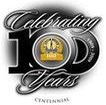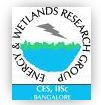 |
Land surface temperature with land cover dynamics: multi-resolution, spatio-temporal data analysis of Greater Bangalore |
 |
References
- Artis, D.A., and Carnahan, W.H., 1982, Survey of emissivity variability in thermography of urban areas. Remote Sensing of Environment, 12, 13-329.
- Balling, R.C., and Brazell, S.W., 1988, High resolution surface temperature patterns in a complex urban terrain. Photogrammetric Engineering and Remote Sensing, 54, 289-1293.
- Carnahan, W.H., and Larson, R.C., 1990, An analysis of an urban heat sink. Remote Sensing of Environment, 33, 65-71.
- Dash, P., Gottsche, F.M., Olesen, F.S. and Fischer, H., 2002, Land surface temperature and emissivity estimation from passive sensor data: Theory and practice-current trends. International Journal of Remote Sensing, 23(13), 2563–2594.
- Duda, R.O., Hart, P.E., and Stork, D.G., 2000, Pattern Classification, A Wiley-Interscience Publication, Second Edition, ISBN 9814-12-602-0.
- Forghani, A., Cechet, B., and Nadimpalli, K., 2005, Object-based classification of multi-sensor optical imagery to generate terrain surface roughness information for input to wind risk simulation. Proceedings of the Geoscience and Remote Sensing Symposium, 2007, IGARSS ’07, 23-27 July, 2007, Barcelona, Spain, IEEE International Publication, 3090-3095.
- Friedl, M.A., 2002, Forward and inverse modeling of land surface energy balance using surface temperature measurements. Remote Sensing of Environment, 79, 344-354.
- Fung, T., and LeDrew, E., 1987, Application of principal component analysis for change detection. Photogrammetric Engineering and Remote Sensing, 53(12), 1649-1658.
- Gallo, K.P., and Owen, T.W., 1998, Assessment of urban heat island: A multi-sensor perspective for the Dallas-Ft. Worth, USA region. Geocarto International, 13, 35– 41.
- Gallo, K.P., McNab, A.L., Karl, T.R., Brown, J.F., Hood, J.J. and Tarpley, J.D., 1993, The use of NOAA AVHRR data for assessment of the urban heat island effect. Journal of Applied Meteorology, 32, 899– 908.
- Kato, S., and Yamaguchi, Y., 2005, Analysis of urban heat-island effect using ASTER and ETM+ Data: Separation of anthropogenic heat discharge and natural heat radiation from sensible heat flux. Remote Sensing of Environment, 99, 44–54.
- Kauth, R.J., and Thomas, G.S., 1976, The tasseled cap-a graphic description of the spectral-temporal development of agricultural crops as seen by LANDSAT. Proceedings of the Symposium on Machine Processing of Remotely Sensed Data, Purdue University of West Lafayette, Indiana, pp. 4B-41-4B – 51.
- Kidder, S.Q., and Wu, H.T., 1987, A multispectral study of the St. Louis area under snow-covered conditions using NOAA-7 AVHRR data. Remote Sensing of Environment, 22, 159–172.
- Kumar, U., Kerle, N., and Ramachandra T.V., 2008, Contrained linear spectral unmixing technique for regional land cover mapping using MODIS data. In: Innovations and advanced techniques in systems, computing sciences and software engineering, edited by Khaled Elleithy. Berlin : Springer, ISBN: 978-1-4020-8734-9, pp. 87 - 95.
- Landsat 7 science data user’s handbook, Landsat Project Science Office, Goddard Space Flight Center, 2002, URL: http://ltwww.gsfc.nasa.gov/IAS/handbook/handbook_toc.html (last accessed: 25 March, 2008).
- Landsbeg, H.E., 1981, The Urban Climate, (New York: Academic Press).
- Li, F., Jackson, T.J., Kustas, W., Schmugge, T.J., French, A.N., Cosh, M.L., Bindlish, R., 2004, Deriving land surface temperature from Landsat 5 and 7 during SMEX02/SMACEX. Remote Sensing of Environment, 92, 521 – 534.
- Lu, D., Mausel, P., Brondizio, E., and Moran, E., 2004, Change detection techniques. International Journal of Remote Sensing, 25(12), 2365-2407.
- Macleod, R.D., and Congalton, R.G., 1998, A quantitative comparison of change-detection algorithms for monitoring eelgrass from remotely sensed data. Photogrammetric Engineering and Remote Sensing, 64(3), 207-216.
- Markham, B.L., and Barker, J.K., 1985, Spectral characteristics of the LANDSAT Thematic Mapper Sensors. International Journal of Remote Sensing, 6, 697-716.
- Michener, W.K., and Houhoulis, P.F., 1997, Detection of vegetation associated with extensive flooding in a forest ecosystem. Photogrammetric Engineering and Remote Sensing, 63(12), 1363-1374.
- Nikolakopoulos, K.G., Vaiopoulos, D.A., and Skianis, G.A., 2003, Use of Multitemporal Remote Sensing Thermal Data for the Creation of Temperature Profile of Alfios River Basin, Proceedings of the Geoscience and Remote Sensing Symposium, 2003, IGARSS '03, 21-25 July 2003. IEEE International Publication, 4:2389-2391, ISBN: 0-7803-7929-2.
- Ramachandra, T.V., and Kumar, U., 2008, Wetlands of Greater Bangalore, India: Automatic Delineation through Pattern Classifiers. Electronic Green Journal, 26, WebURL: http://egj.lib.uidaho.edu/index.php/egj/article/view/3171
- Schmugge, T., Hook, S.J., and Coll, C., 1998, Recovering surface temperature and emissivity from thermal infrared multispectral data. Remote Sensing of Environment, 65, 121– 131.
- Snyder, W.C., Wan, Z., Zhang, Y., and Feng, Y.Z., 1998, Classification based emissivity for land surface temperature measurement from space. International Journal of Remote Sensing, 19, 2753– 2774.
- Stathopoplou, M., Cartalis, C., and Petrakis, M., 2007, Integrating CORINE Land Cover data and landsat TM for surface emissivity definitions: an application for the urban areas of Athens, Greece. International Journal of Remote Sensing, 28, 3291-3304.
- Stathopoulou, M., and Cartalis, C., 2007, Daytime urban heat island from Landsat ETM+ and Corine land cover data: An application to major cities in Greece. Solar Energy, 81, 358-368.
- Tanaka, Y., Shibata, S., and Gotoh, K., 2005, Appearance Characteristic Analysis of Heat Island Phenomenon by Using Satellite Remote Sensing and GIS. Proceedings of the Geoscience and Remote Sensing Symposium, 2005, IGARSS ’05, 25-29 July 2005, IEEE International Publication, 3:1855-1858, ISBN: 0-7803-9050-4.
- Weng, Q., Lu, D., and Schubring, J., 2004, Estimation of land surface temperature – vegetation abundances relationship for urban heat island studies. Remote Sensing of Environment, 89, 467-483.
- WUP (World Urbanization Prospects): The 2005 Revision, Population Division, Department of Economic and Social Affairs, UN.
- Zhang, J., and Zhang, Y., 2007, Remote Sensing research issues of the National Land Use Change Program of China. Photogrammetry & Remote Sensing, 62(6), 461-472.
|
|

